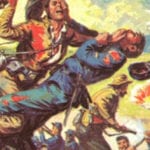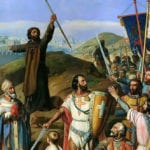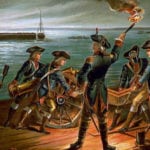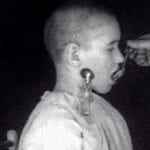 Food
Food  Food
Food  History
History 10 Odd Things Colonial Americans Kept at Home
 Weird Stuff
Weird Stuff 10 Superstitious Beliefs That Once Consumed Entire Cultures
 History
History 10 Bizarre Friendly Fire Incidents in Military History
 Technology
Technology 10 Modern Technologies That Accidentally Imitate Ancient Magic
 Mysteries
Mysteries 10 Mysteries of the Human Genome
 Weird Stuff
Weird Stuff 10 Things So Rare They’ve Only Been Found Once
 History
History 10 Legends Whose Last Moments Undid Their Glory
 Health
Health 10 Futuristic Ideas to Treat Common Medical Problems
 Weird Stuff
Weird Stuff Ten Surreal Attempts to Reverse Baldness
 Food
Food 10 Everyday Foods You Didn’t Know Were Invented by the U.S. Military
 History
History 10 Odd Things Colonial Americans Kept at Home
 Weird Stuff
Weird Stuff 10 Superstitious Beliefs That Once Consumed Entire Cultures
Who's Behind Listverse?

Jamie Frater
Head Editor
Jamie founded Listverse due to an insatiable desire to share fascinating, obscure, and bizarre facts. He has been a guest speaker on numerous national radio and television stations and is a five time published author.
More About Us History
History 10 Bizarre Friendly Fire Incidents in Military History
 Technology
Technology 10 Modern Technologies That Accidentally Imitate Ancient Magic
 Mysteries
Mysteries 10 Mysteries of the Human Genome
 Weird Stuff
Weird Stuff 10 Things So Rare They’ve Only Been Found Once
 History
History 10 Legends Whose Last Moments Undid Their Glory
 Health
Health 10 Futuristic Ideas to Treat Common Medical Problems
 Weird Stuff
Weird Stuff Ten Surreal Attempts to Reverse Baldness
10 Historic Battles That Helped Preserve Christianity
Christianity is a religion of peace (as are the other Abrahamic faiths, like Islam and Judaism). Yet Christianity has a long, bloody history of warfare, in complete violation of the New Testament’s teachings. Most interesting are the defensive acts of warfare carried out in the name of Christ. The battles on this list may have helped to preserve Christianity in their immediate area, but should the warriors involved have simply turned the other cheek?
10The Battle Of Edington
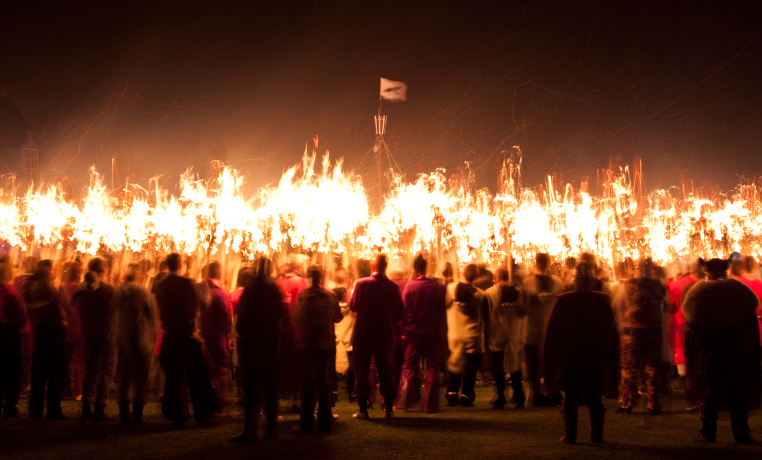
In A.D. 878, the Anglo-Saxon kingdom of Wessex, led by Alfred the Great, defeated a Viking force led by Guthrum the Old at Edington. Thirteen years earlier, a Viking force known as the Great Heathen Army had landed in Northern England, quickly conquering most of the country. Wessex was the last major holdout.
Alfred had spent the winter of 877 fortified in a Somerset marshland while he gathered his forces. When the spring came, he sallied forth to Edington, in what is now Wiltshire. The Great Heathen Army had splintered somewhat—its original leaders, the sons of Ragnar Lodbrok, were dead or absent—but Guthrum was still able to muster a formidable force. Yet Alfred arranged his men in a shield-wall and fought the Vikings for hours, until the Norsemen routed back to their fortress at Chippenham.
When the Vikings ran out of food, they sued for peace, swearing to return to East Anglia and leave Wessex alone. Guthrum himself promised to be baptized. Under Cnut the Great, the Norsemen would eventually conquer England, but it wouldn’t last—and by that point the Vikings had converted to Christianity anyway.
9The Night Attack Of Targoviste
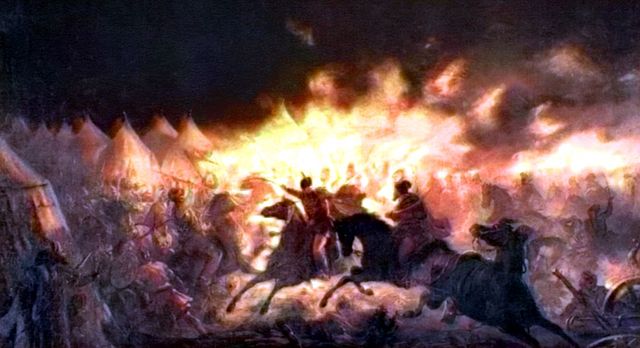
The Battle of Targoviste was fought on the night of June 17, 1462 between the armies of Ottoman Sultan Mehmed II and Vlad III, Prince of Wallachia. Better known as “Vlad the Impaler” or “Dracula,” the real Vlad was a hardened veteran of the long Ottoman conquest of the Balkans. Mehmed demanded a jizya, or tax on non-Muslims, from many bordering states, but Vlad refused to pay. In 1460, the Hungarian regent Michael Szilagyi (Vlad’s main ally against the Ottomans) was captured by the Turks and sawed in half.
When Mehmed’s forces crossed the Danube and began pressing young boys into military service, Vlad responded by capturing Turkish soldiers and impaling them. Mehmed attempted to trick Vlad into an ambush, but the Wallachians surrounded and massacred his force of 1,000 cavalry. By 1462, Vlad was engaging in outright ethnic cleansing—by his own estimate, his forces slaughtered over 23,000 Muslim civilians and sympathizers. In response, Mehmed invaded Wallachia with at least 150,000 men. Vlad could only field around 30,000.
Vlad began a scorched-earth campaign, retreating while burning crops, poisoning water supplies, and diverting small rivers to create marshlands. He even sent civilians infected with syphilis, leprosy, and bubonic plague into the Turkish ranks.
On June 17, the Turks were camped south of the Wallachian capital, Targoviste, when Vlad launched a surprise night attack with 7,000 to 10,000 cavalry. The attack caused chaos in the Ottoman ranks (historians differ on the numbers killed, but many of the casualties were inflicted by confused Turkish units attacking each other). By dawn they had regrouped and pursued Vlad’s forces toward Targoviste. When Mehmed reached the city he found it abandoned, with a forest of impaled Turks stretching for miles around it. Unsurprisingly, he then turned around and left, allowing Vlad to cling to power for a few more months.
8The Battle Of Lepanto
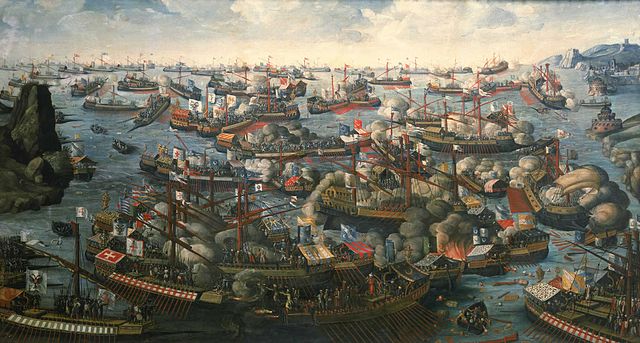
This was a massive naval battle fought on October 7, 1571 in the gulf separating mainland Greece and the Peloponnese. The Ottoman Empire was intent on dominating the Mediterranean and had recently taken the island of Cyprus from the Venetians. In response, Pope Pius V formed a coalition known as the Holy League, comprising Spain and various Italian states. The Holy League fielded 208 ships against an Ottoman fleet of 230 galleys. The Ottoman fleet must have carried more than 30,000 men, since they lost this many in the battle, and the Christian fleet likely carried a similar amount. Most of the ships were galleys, but the Holy League also fielded six larger galleasses, which had been packed full of artillery.
The two fleets eventually stumbled across each other in the Gulf of Patras. There was no real need to engage, but both sides chose to fight. It was the first time the Turks had seen the new galleasses, which had side-mounted cannons. Mistaking them for merchant vessels, the Turks sailed right up to them to attack. The gigantic ships opened fire, sinking two Turkish galleys immediately.
The Ottomans quickly changed their minds and sailed past the galleasses to do battle with the main fleet. The center of the Holy League’s line was nearly broken when several ships of the Holy League sailed off to prevent a Turkish flanking maneuver, but they returned just before the Ottomans could exploit the gap and the Spanish reserves soon arrived to turn the tide.
The fighting lasted until 4:00 PM, by which point the Turks had been defeated on all fronts, with 210 ships lost against the Holy League’s 51. The spectacular victory crippled the Ottoman navy for a generation.
7The Battle Of Calugareni
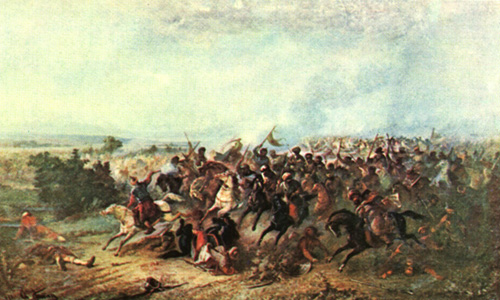
Yet another engagement in the endless Ottoman Balkan wars, the 1595 Battle of Calugareni saw a Turkish army of up to 40,000 confronted by around 15,000 Romanians led by Michael the Brave. The Romanians were defending a narrow bridge over the Neajlov River, which the Turks needed to take to continue their advance.
When the Ottomans arrived on August 23, Michael’s cavalry ambushed theirs and drove it back over the Neajlov. Meanwhile, the Romanian cannons devastated the Turkish infantry, who were packed together as they tried to cross the bridge. Michael’s infantry drove the remnants back and then retreated into the marsh again.
At noon, the Ottomans launched a massive assault. The entire Turkish infantry struck forward over the bridge, while the cavalry forded the river on both sides in a pincer move. The Romanians held for a while but were eventually forced to retreat to avoid being flanked, leaving their cannons behind in the process. Michael rallied his men north of the village and managed to contain the Turks in the marsh.
That afternoon, Michael personally led a counterattack. The Ottomans were pushed back into their own cavalry and the whole of the Turkish army found itself trapped in the marsh, while the Romanian cavalry flanked them and struck their rear. A Turkish cavalry charge prevented the Romanians from pursuing, but the main Ottoman army was routed and fled. They lost some 10,000–15,000 soldiers, while the Romanians lost just 1,000.
6The Battle Of Covadonga
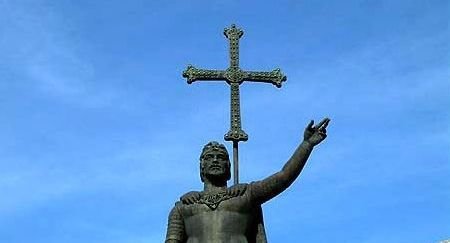
The Umayyad Caliphate was established after the downfall of the original Rashidun Caliphate. The Umayyads ruled one of the largest empires in history, stretching from Persia to Morocco. In the early eighth century, the Caliphate invaded Spain, quickly defeating its Visigoth rulers. By 718, they controlled most of the Iberian Peninsula.
The exception was the mountainous, impoverished northwest, where a Visigoth leader called Pelagius or Pelayo had set up a stronghold and begun raiding Muslim outposts. Fortunately for Pelagius, the Umayyads were preoccupied in the richer areas of Spain and France and didn’t initially bother to retaliate in any great numbers.
The exact details (and even the date) of the battle are a little unclear, but it may have come in 721, when Anbasa ibn Suhaym al-Kalbi failed to take the city of Toulouse. To save face, he decided to destroy the pesky Pelagius on his way back. His much larger forces quickly forced Pelagius and his men to retreat to Auseva Mountain, near the River Sella. With the Muslims in hot pursuit, Pelagius chose a narrow valley and placed archers atop the ridges, while hiding most of his men in a cave.
The archers killed many of the Umayyad forces, throwing rocks and tree trunks down on them, before Pelagius and his men sallied forth from the cave and joined the battle. The battle subsequently became the stuff of legend, although in truth it was probably little more than a skirmish. Regardless, it marked the beginning of the Christian reconquest of Spain.
5The Siege Of Paris
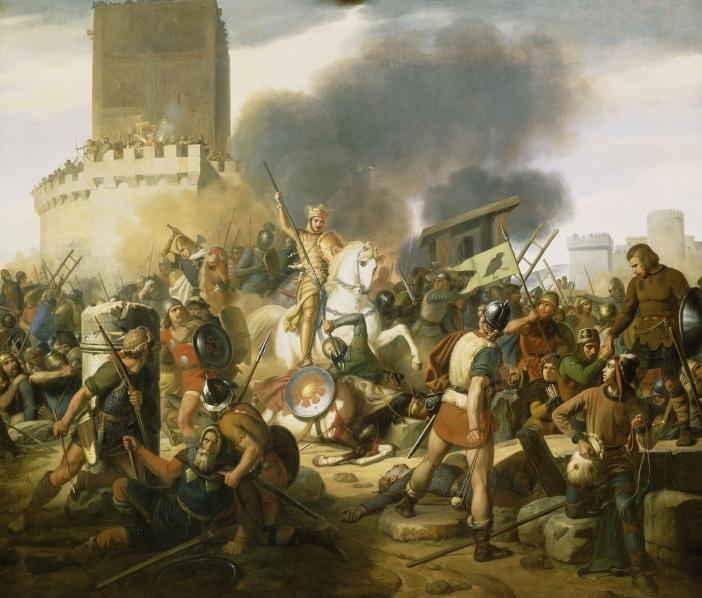
In 885, at the time of the second Viking siege of Paris, the city was contained entirely on the small island now known as Ile de la Cite. Its strategic importance came from its two bridges over the Seine, which could block ships from sailing upriver. If the Vikings wanted to raid the rich French countryside, they would first have to take Paris. To do this, they brought hundreds of ships and as many as 30,000 warriors. Meanwhile, Count Odo of Paris only had around 200 soldiers at his disposal.
The Vikings entrenched themselves and repeatedly attempted to burn down the northeast guard tower and footbridge, which would have allowed them to sail around the island. For two months they failed, despite deploying catapults and gigantic crossbows known as ballistae. The Frankish defenders dumped wax and burning pitch on them and actually managed to add another story to the guard tower mid-siege. Gozlin, the Bishop of Paris, personally entered the fight wielding a battleaxe. Count Odo himself fought hand-to-hand atop the battlements.
Then the Seine flooded and the weakened bridge gave way, leaving the tower cut off from the city. Only 12 men garrisoned the tower, yet they refused to surrender. All 12 were killed. By spring, the Vikings had Paris completely surrounded and were able to loot the surrounding countryside. The main Frankish army didn’t arrive until October, quickly breaking the siege. Despite this victory, the Franks ended up paying the Vikings a fortune in silver to stay away.
4The Battle Of Vienna
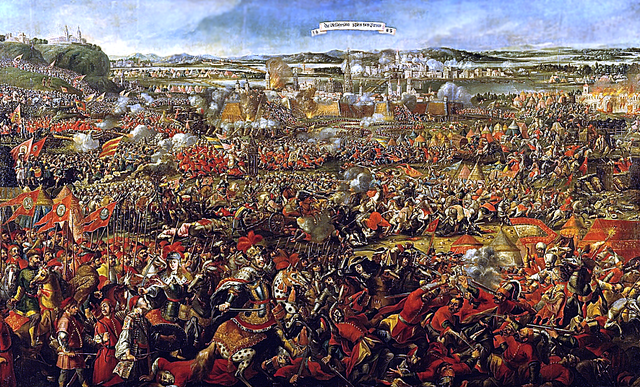
The breaking of the siege of Vienna in 1683 effectively halted the Ottoman advance into Western Europe for good and marked the peak of the Ottoman-Habsburg War, which lasted from about 1526 to 1791. The Turks fielded as many as 138,000 troops, although only a fraction participated in the siege proper. Meanwhile, the Viennese garrison consisted of around 12,000 effective soldiers and volunteers. Because of this, the Ottomans decided that an assault would prove too costly. Instead, they ordered extensive tunneling under the walls to plant black powder.
The siege began on July 14 and lasted until September 11. The Turks nearly starved the city into surrender and succeeded in blowing up large areas of the outer fortifications. But on September 11, a relief force led by the Polish King Jan Sobieski arrived. With around 60,000 men at his command, Sobieski had intended to attack on September 13, but the Turks were so close to the walls that he decided to launch an assault the next morning.
By the early afternoon, the Turks had been pushed off the high ground. Sobieski personally led one of the largest cavalry charges in recorded history, shattering the Turkish lines. The Viennese garrison exited the city and joined the battle. By nightfall, the battle was over and Sobieski was standing in the Turkish Vizier’s empty headquarters, where he paraphrased Julius Caesar: “We came. We saw. God conquered.”
3The First Arab Siege Of Constantinople
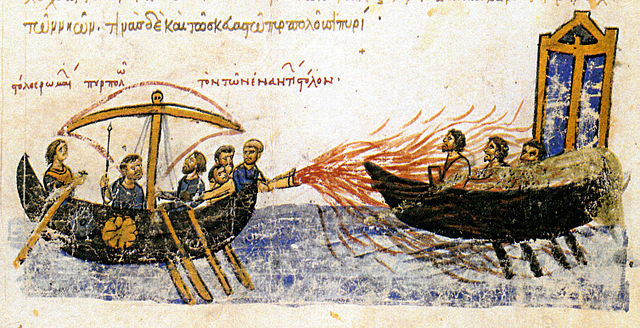
Istanbul was Constantinople, and (speaking historically) that was everyone’s business. In 674, the Umayyads raised a large army (the exact numbers are unknown) for the purpose of conquering the Byzantine capital. Most of our information about the siege comes from Saint Theophanes the Confessor, who wrote about events a century later. According to Theophanes, the Arab fleet landed in Thrace in April and immediately engaged the Christian garrison outside the Golden Gate. The armies fought every day from morning to night until September, when the Arabs sailed south to Cyzicus and settled in for the winter.
The Arabs subsequently renewed the siege each spring for the next three years, before Constantine IV decided to meet them in open battle in 678. Unbeknownst to the besiegers, Constantine had an ace up his sleeve—Greek fire. We still have little idea of how to make it, but by all accounts it was a napalm-like solution that could be projected ship-to-ship through long hoses and bellows. Its chemical makeup enabled it to burn even when it came into contact with water.
This was the first time Greek fire was used in combat, and the Arabs had no defense—their fleet was completely routed. Simultaneously, a Muslim land army was defeated in Turkey, suffering as many as 30,000 casualties. This prompted the Umayyad Caliphate to abandon its plans for conquering Constantinople.
2The Battle Of Tours

By A.D. 732, the Umayyad Caliphate was led by Hisham ibn Abd al-Malik, who reigned over the the fifth largest empire ever to exist. His forces had already conquered Spain, and now his eye turned to France. The total force for the invasion may have numbered 80,000, although probably only around 10,000–30,000 were involved at Tours.
The Franks were led by Charles Martel, Latin for “the Hammer.” He was able to muster an army of 15,000–20,000, although other estimates reach as high as 80,000. In any case, it’s likely that neither force significantly outnumbered the other. However, the Frankish army was almost entirely infantry, whereas the Umayyad forces were largely heavy cavalry. Ordinarily, cavalry should have won such a contest by flanking, but Charles was able to choose the perfect battlefield: a hilltop surrounded for miles by dense woods. The Umayyads could not charge through the forests and going around was out of the question because the Franks blocked the only road into Tours. The Muslim leader, Abd Al-Rahman al-Ghafiqi, decided to risk a battle on the unfavorable ground, ordering a charge into Charles’s infantry.
The fighting took place over a single day in October. By nightfall, the Umayyad army was completely broken, with thousands dead. Abd Al-Rahman tried to rally his forces but was surrounded and cut down. At least once, a small group of enemy cavalry are said to have broken through the Frankish lines and assaulted Charles himself, but his bodyguards surrounded him. The battle secured Christian domination of Western Europe, a legacy bloodily secured by Charles’s grandson: Charlemagne.
1The Battle Of The Milvian Bridge
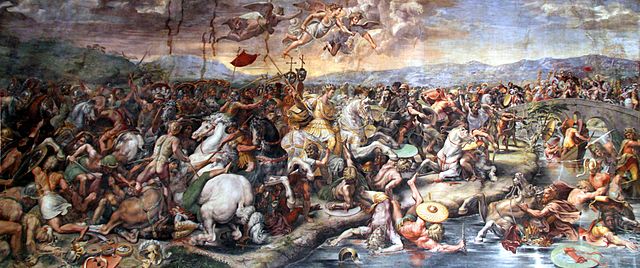
The first major battle in which Christianity played a part, the Milvian Bridge saw the triumph of Roman Emperor Flavius Valerius Constantinus, better known as Constantine the Great, over his rival Maxentius.
The war initially had little to do with religion, since both commanders adhered to the traditional Roman gods. But on October 27, the night before the battle, Constantine apparently had a dream in which the Christian God appeared to him and instructed him to inscribe a Christian symbol (either a cross or the lesser-known Chi-Rho symbol) on his soldiers’ shields. The story of the dream was recorded separately by the contemporary historians Lactantius and Eusebius.
Following the vision, Constantine marched south to the outskirts of Rome and paused, apparently waiting to see if Maxentius would march out to meet him or try to force a prolonged siege. His rival chose the former and decided to hold Constantine’s army at the Milvian Bridge.
However, Maxentius disposed his men with their backs too close to the River Tiber, leaving them little room to regroup before retreating across the bridge. Constantine’s horsemen broke the enemy cavalry, clearing the way for his infantry to attack. Realizing the situation was deteriorating, Maxentius ordered a full retreat back across the bridge, taking heavy casualties in the process. But as his army crossed, the bridge collapsed, stranding those still on the northern bank. Maxentius drowned and Constantine entered Rome a conquering hero, establishing Christianity as a state-supported religion in gratitude. Roman Catholicism had begun.
FlameHorse is a writer for Listverse.



